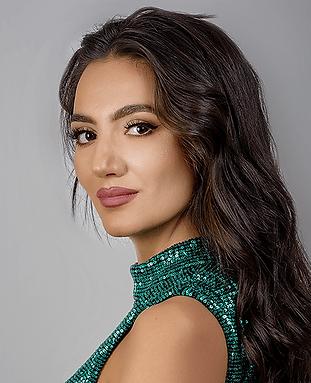This is the life of a commercial model
"We won more than the catwalk models because we are also paid the image right," explains the 27 -year -old.According to her representative Carlos Barril, the percentages vary but, in general, the models take 70%, the mother agency (its main representative of it) by 10%and the agencies on the ground 20%.Campaigns do not have a standard price."The most basic cost about 3,000 euros and a great campaign can exceed 100,000," says Barril.The fashion business moves around 30,000 million euros in Spain, which represents 2.8% of GDP, according to the Spanish Fashion Observatory.It is the fourth country of Europe that exports the most fashion, after France, Italy and Germany.
What differentiates them from the commercial models of the catwalk are mainly the measures."They are not required such strict measures, with 1.70 they can work," says Barril, which is the founder of Talent Model, Viliane's mother agency.However, 90-60-90 is still present.He explains that for the chest perhaps 90 is a lot, but a 58-62 and hip 90 is demanded from the waist."We do not put the measure, but the designers," he says.He also explains that depending on the country, some measures or others are demanded: "In Turkey or in India they are more flexible and in catwalks like Milan they ask for almost impossible measures."At the end of May, Congress approved the establishment of timely legal measures that regulate the model activity to fight anorexia and avoid the negative influence of advertising.
"The fashion structure has changed a lot, now there are models of all bodies," says Viliane. She is considered in a middle ground, nor does it have the measures of a catwalk model, nor belong to the XXL models. But the pressure is there. "I know how to distinguish my vacation time very well, in which I give my whims, which I am working on." The work of her consists of making seasons of about three months in cities around the world. She has worked in Greece, Turkey or India. But it doesn't matter where she is, the dynamic is always the same. "I live with many girls, I exercise, I take care of my diet and my day to day is to make a casting after another." She has come to do eleven castings in a single day. "If they told them that one in ten would never work," says Barril. But the reality is different. They face constant negatives. "It is a risky profession, that if you are not very emotionally and sure of yourself it can affect you a lot," says the model.
The Life Coach Marketing Bible.: Learn How To Get More Clients and Improve your Coaching or Consulting Business Wit ... http://t.co/p770dh2x52
— SEO & Social Market Wed Sep 24 16:46:18 +0000 2014

She however loves her job.One of the most rewarding moments she lived was to appear in a campaign in India."Seeing my giant sign on a Bombay street was a dream," she has enthusiastically.Those joys she shares them with her followers on her Instagram, who for now is about 4000. "I am a geek of the networks, public everything I do," she says.Brands value the presence of social networks models to achieve greater reach.According to fashion fashion sales through the Internet represented almost 8% of the total ecommerce billing in Spain in 2016. And in the first nine months of 2017 they rose 24%, to 1,215.7 million euros.
And for Viliane it is a way to demystify the image of the mannequins."We break with the doll model stereotype because we show each other as we are," she says.Far left that day of 1988 when Kate Moss was discovered by chance at the John F. Kennedy International Airport by Sarah Daukas."Now agencies and brands look for our models from anywhere in the world on social networks," says Barril.In a world where online purchases are about 20% of total clothing and accessories sales in Europe, networks in networks is fundamental.The next stop of the Brazilian is London, from there he will go to Berlin or Dubai, where he firm before.All their movements will be saved in their Instagram stories."My dream is to end up working in Miami, Los Angeles or New York," concludes Pego.









